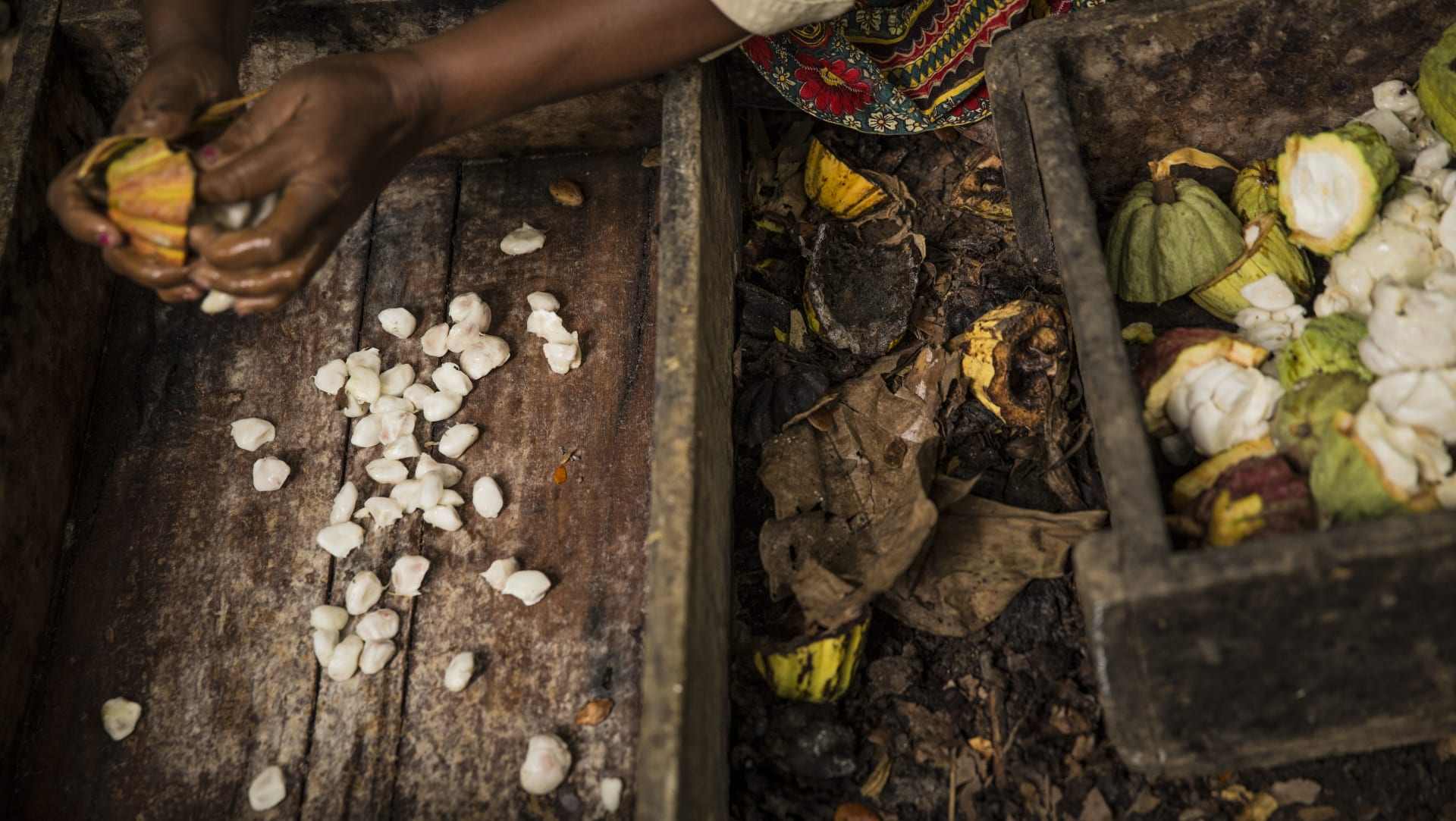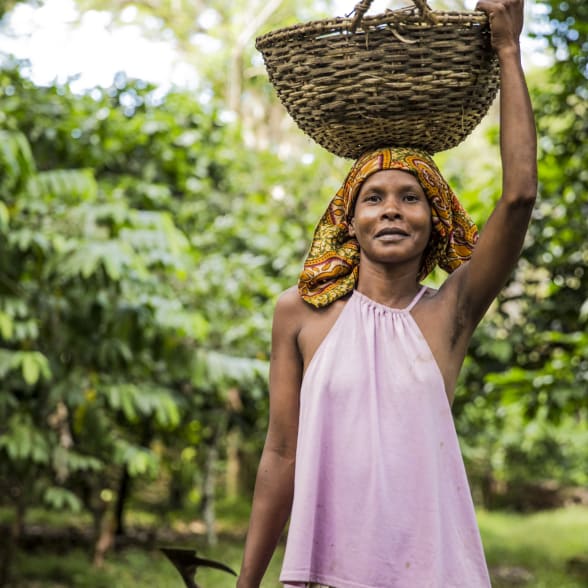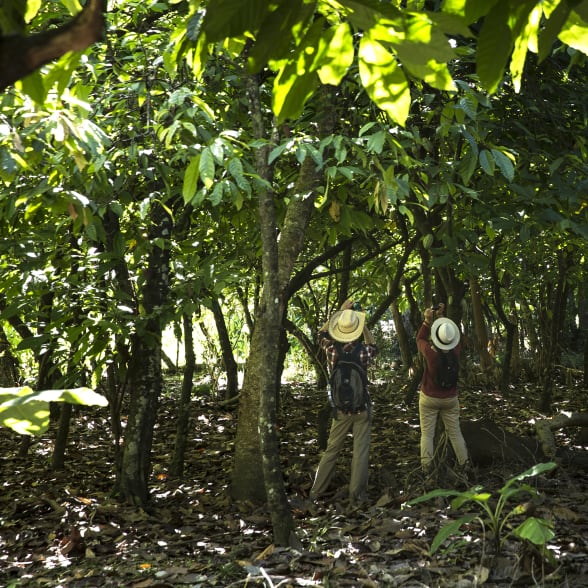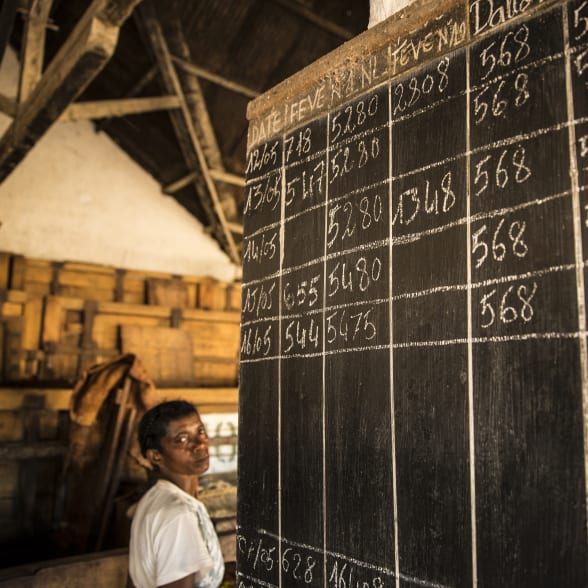You are using an outdated browser. Please upgrade your browser to improve your experience and security.

Our approach to traceability
Traceability underpins all our policies and ambitions and is a prerequisite for any environmentally and socially responsible business. It enables us to monitor, strengthen and orient our actions.
Background and aims
Cocoa beans’ traceability is a crucial issue for the chocolate industry and world trade. It's an essential tool for any company that wants to commit to ethical production and consumption.
By identifying beans’ exact origin through traceability techniques, we can strengthen:
- Quality and food safety: Traceability enables us to monitor the entire production process, from the plantation to the finished product. This guarantees that the beans comply with health regulations.
- Efforts to counter child labor: It ensures that beans are not produced illegally or under abusive working conditions in areas not covered by cooperatives or NGOs.
- Sustainability and respect for the environment: traceability ensures that no bean comes from a deforested area, and helps identify areas with sustainable agricultural practices to encourage them,
- Action against fraud and illegal trade: Bean traceability helps prevent fraudulent practices such as mixing beans from different origins to charge higher prices. It also makes it possible to detect and combat illicit trade in cocoa beans, which has a negative economic impact on legitimate producers.
- The credibility of brands’ commitments.

Map of Valrhona’s cocoa sources in 2022
Making cocoa beans traceable entails following their journey from where they are produced right up until the moment, they are processed into finished products in our chocolate factory.
This is a complex process, as cocoa beans go through several stages across different operators. That said, methods and technologies are constantly evolving. At Valrhona, we have chosen to rely on tracking and managing cocoa beans’ physical movements. This makes it possible to collect data on provenance, transport, storage and different stages in the transformation process.
Our aim is to provide maximum transparency on the origin and traceability of 100% of our supplies so that we can guarantee our customers, partners and consumers chocolate that combines taste and quality while respecting people and the environment.
Valrhona's commitments and actions
1. Traceability from the producer onwards
At Valrhona, we work directly with producers and cooperatives, producer associations and private plantations. Because our supply chains are short, we have been committed to guaranteeing 100% of our cocoa bean purchases’ traceability since 2018. This attention to detail enables us to know the origin of every cocoa bean, its producer and the conditions under which it was grown.
We have a list of producers who have or can take part in putting together each batch of cocoa beans we buy. This level of traceability is an integral part of the long-term partnership strategy we are developing with our partner suppliers.

2. Plot-based traceability through polygon mapping
Since 2019, Valrhona is committed to extending its plot-based traceability so that we can gain even more visibility over production areas.
Polygonal mapping is a topographic survey using a succession of GPS points that allows for the creation of a ground plan of the boundaries of a property. We use this method to map the plots of our partner producers using those polygons, regardless of their size, for maximum precision.
This mapping of all plots allows us to verify, by overlaying with the official maps of each country, that none of them are located in protected areas. By choosing this method, we have decided to go beyond the European regulation against deforestation and forest degradation (EUDR).
These mappings are done by our partner suppliers or by a local provider who is an expert in this field.
By the end of 2024, 100% of the plots of our cocoa partner producers are mapped.

3. Ensuring physical and financial traceability using digital systems
At Valrhona, we are aware that we need to go even further in terms of the traceability tools we use, so we have launched a plan to make cocoa physically and financially traceable.
As of 2022, we have been developing an "upstream digitalization" project to make multi-functional digital resources. This type of tool should be able to trace cocoa both physically and financially from the producer all the way to the Valrhona chocolate factory in France.
4. Traceability for cocoa butter and powder
Valrhona has determined to help make cocoa-derived products traceable by adopting a certification process.

Key performance indicators for 2030
100% of beans
traced at plot level over the long term, current, and new partners included
100% of our bean purchases
are digitized and physically and financially traceable
Portrait of a cocoa Sourcer
Through the testimony of Cédric Robin, cocoa sourcer, discover Valrhona's traceability approach.



